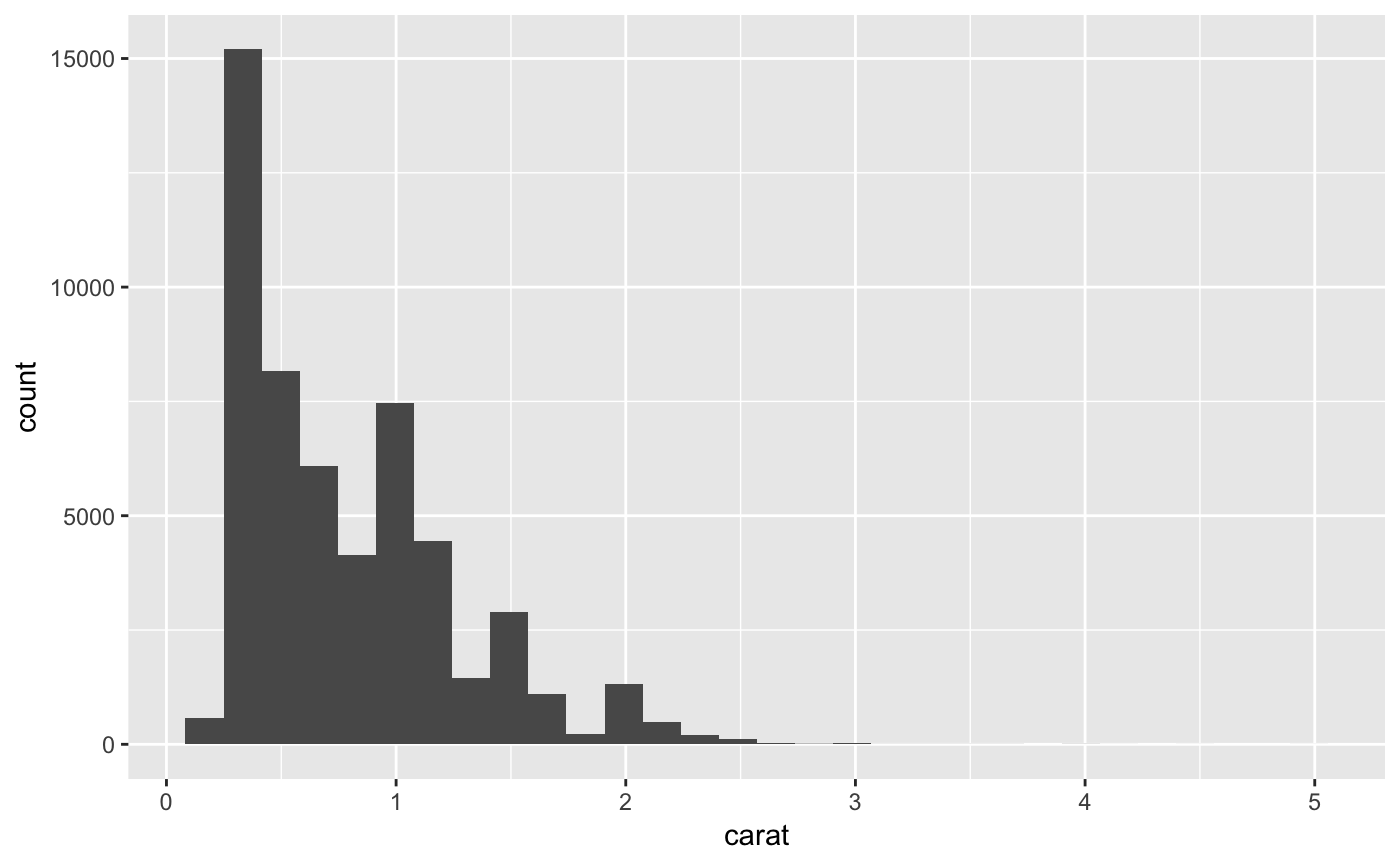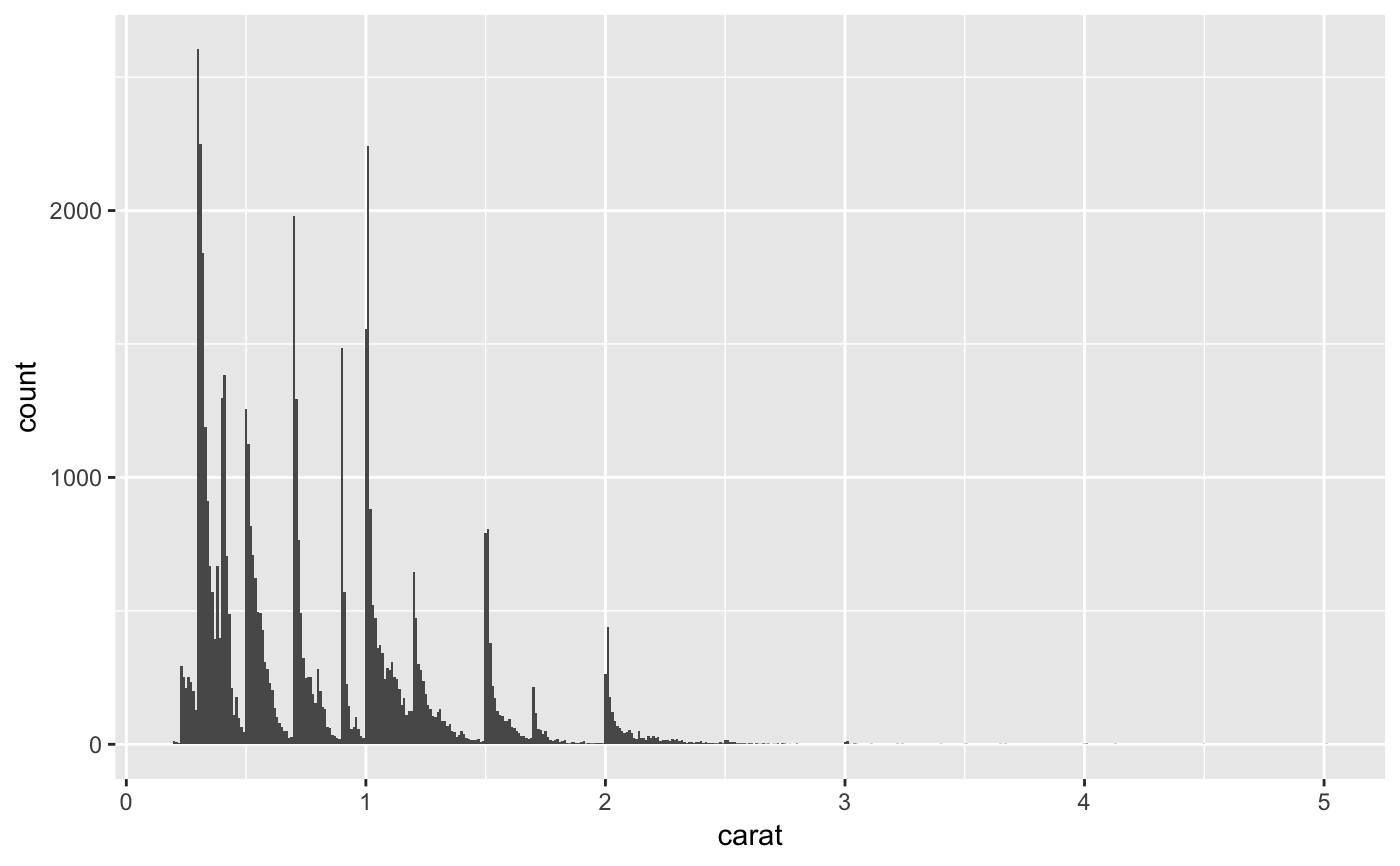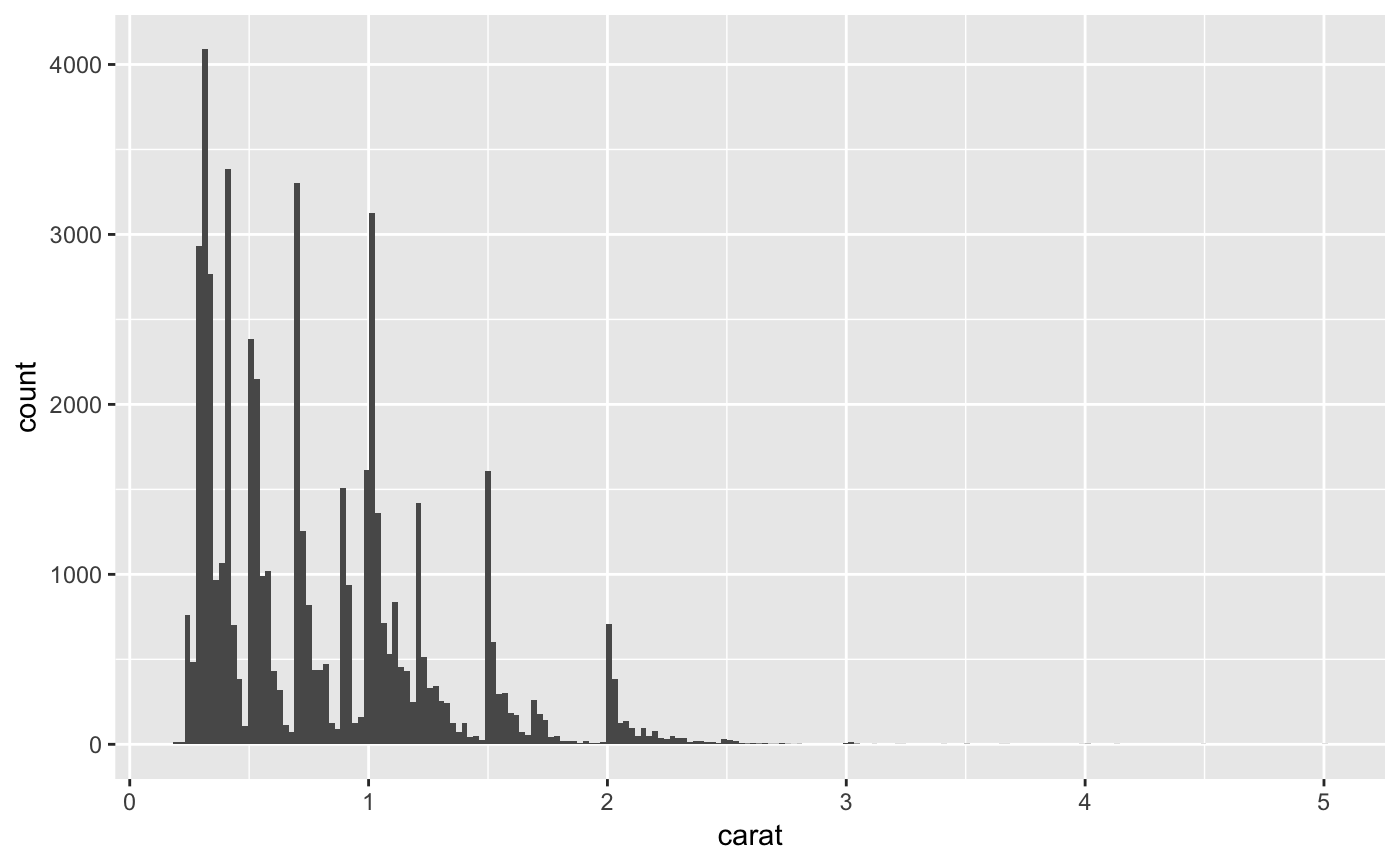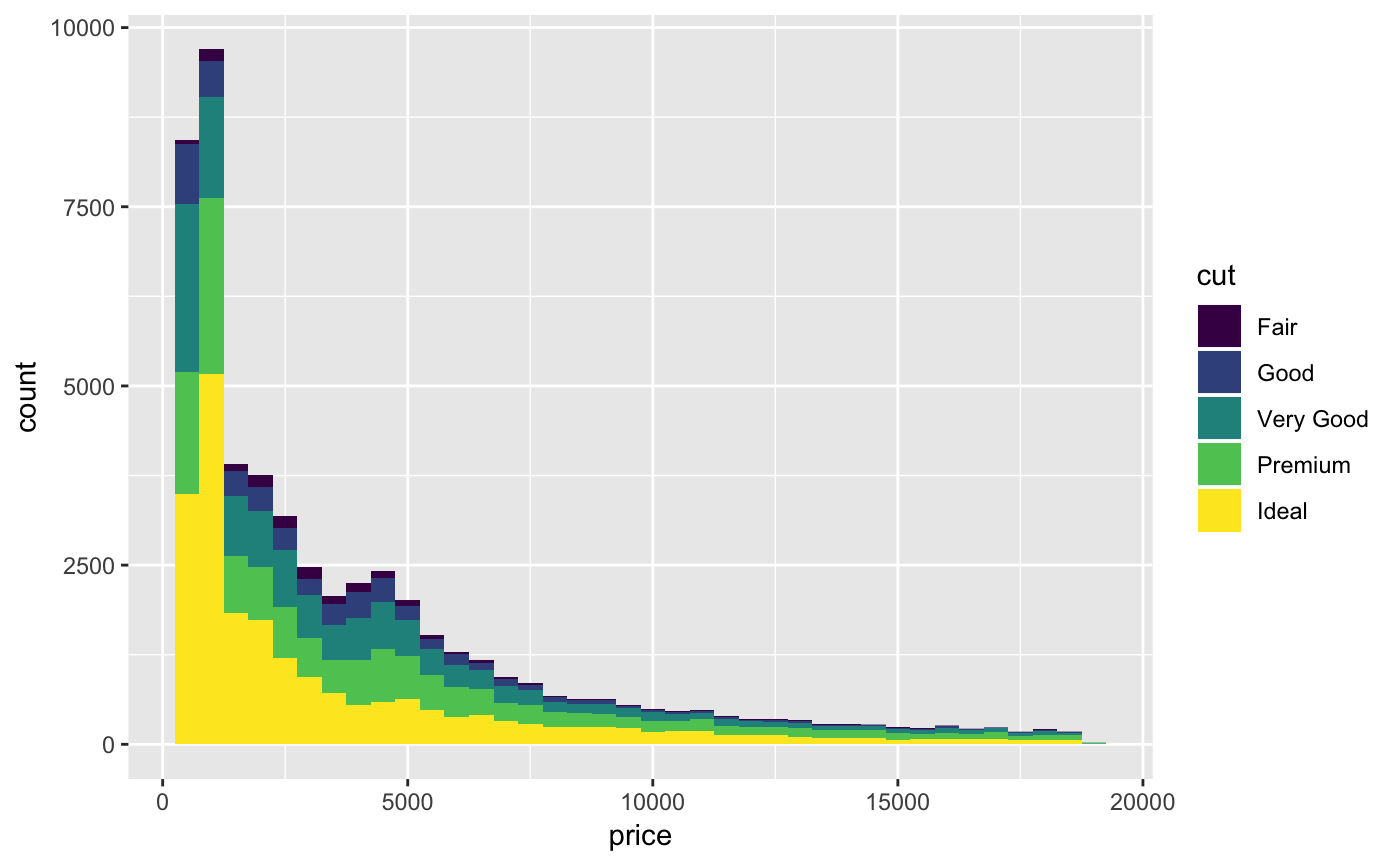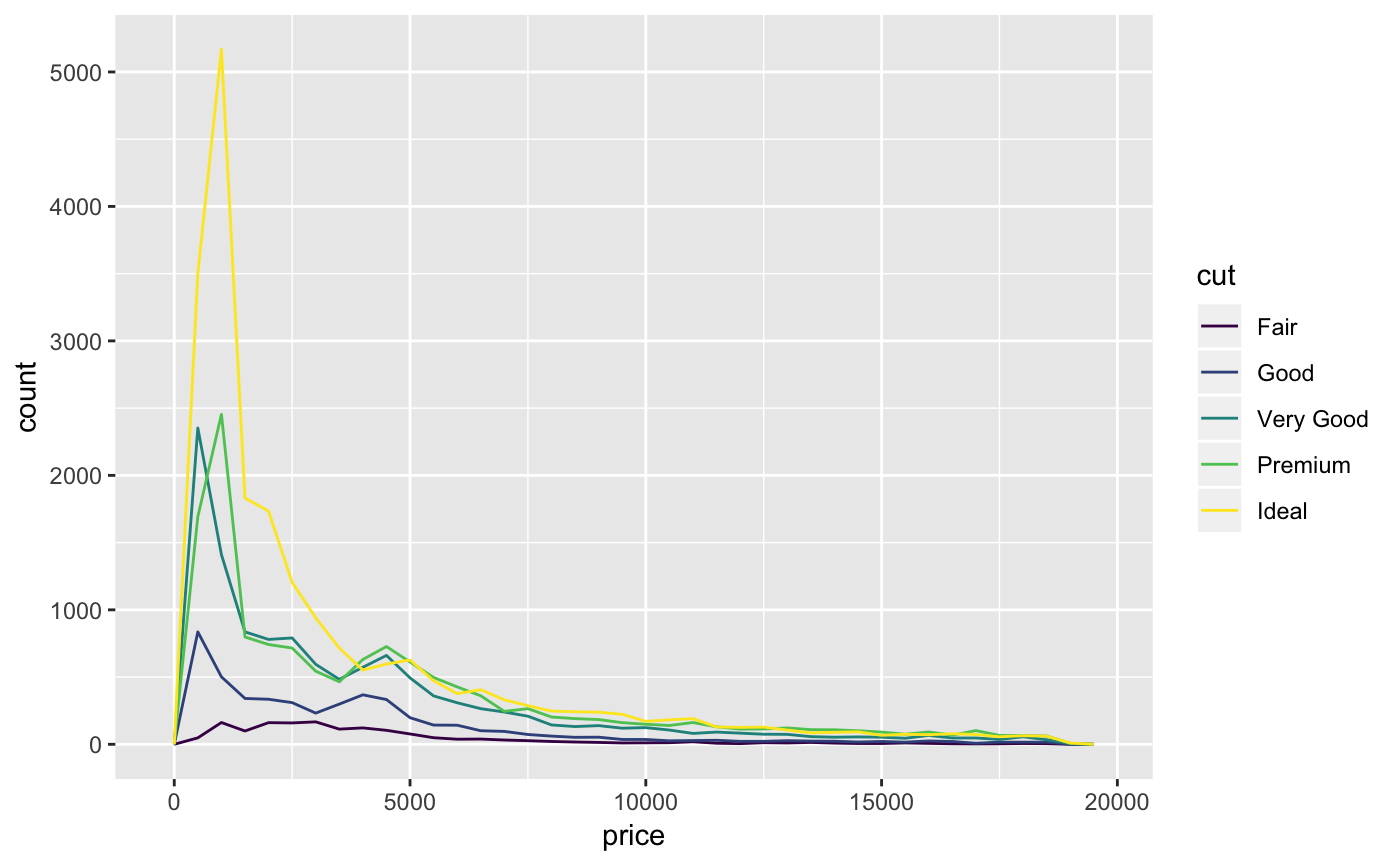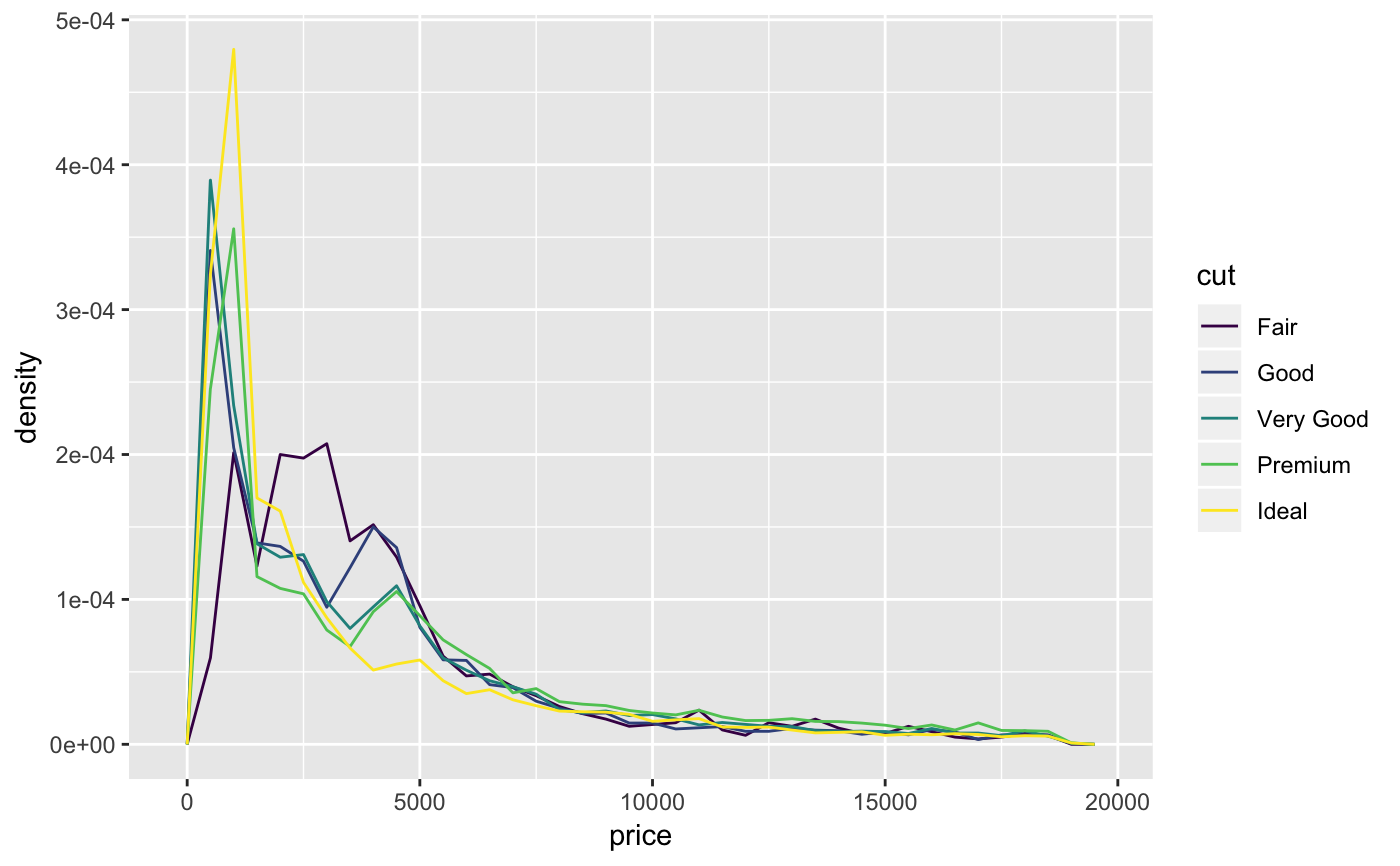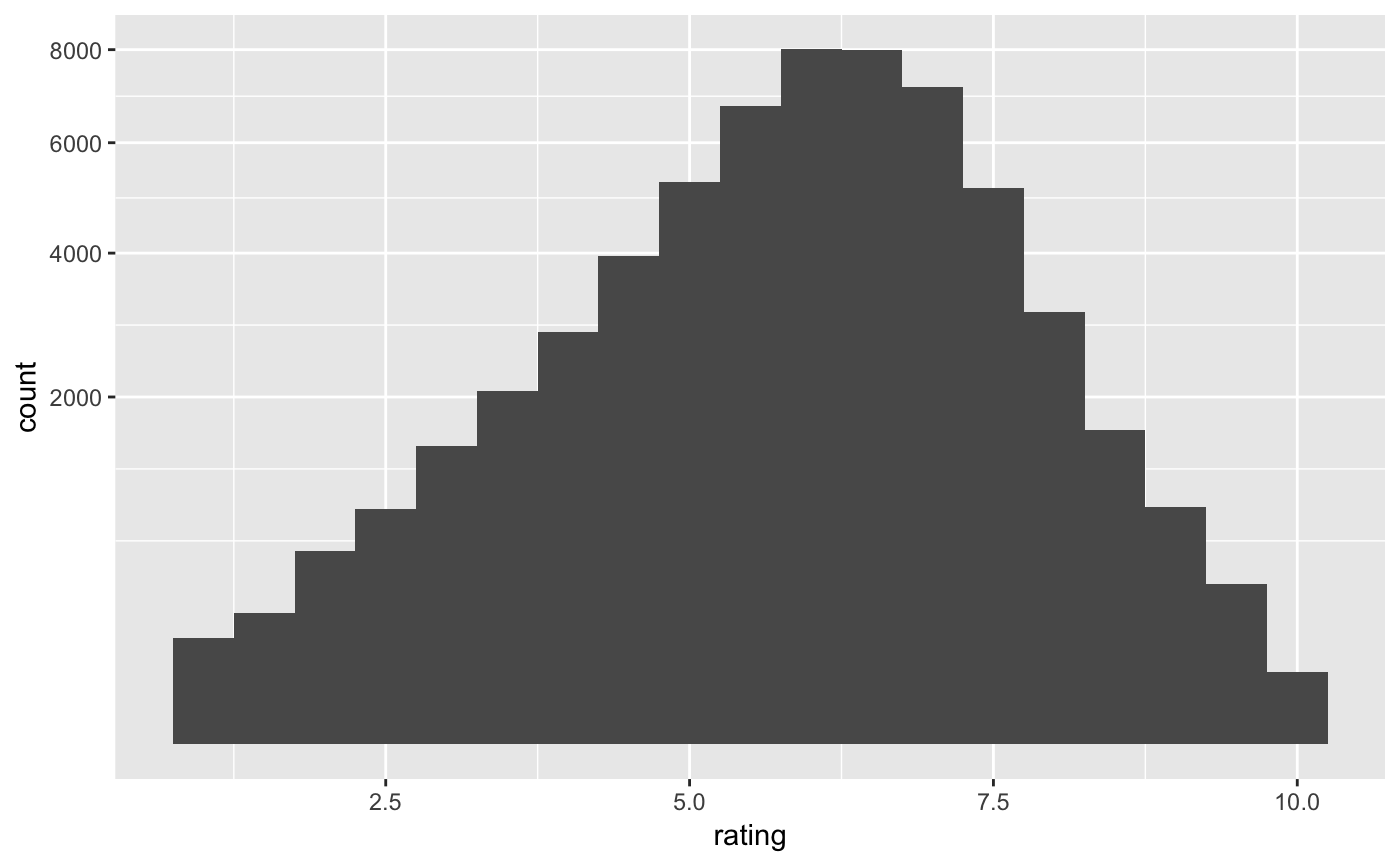Histograms and frequency polygons
Source:R/geom-freqpoly.r, R/geom-histogram.r, R/stat-bin.r
geom_histogram.RdVisualise the distribution of a single continuous variable by dividing
the x axis into bins and counting the number of observations in each bin.
Histograms (geom_histogram) display the count with bars; frequency
polygons (geom_freqpoly) display the counts with lines. Frequency
polygons are more suitable when you want to compare the distribution
across the levels of a categorical variable.
geom_freqpoly(mapping = NULL, data = NULL, stat = "bin", position = "identity", ..., na.rm = FALSE, show.legend = NA, inherit.aes = TRUE) geom_histogram(mapping = NULL, data = NULL, stat = "bin", position = "stack", ..., binwidth = NULL, bins = NULL, na.rm = FALSE, show.legend = NA, inherit.aes = TRUE) stat_bin(mapping = NULL, data = NULL, geom = "bar", position = "stack", ..., binwidth = NULL, bins = NULL, center = NULL, boundary = NULL, breaks = NULL, closed = c("right", "left"), pad = FALSE, na.rm = FALSE, show.legend = NA, inherit.aes = TRUE)
Arguments
| mapping | Set of aesthetic mappings created by |
|---|---|
| data | The data to be displayed in this layer. There are three options: If A A |
| position | Position adjustment, either as a string, or the result of a call to a position adjustment function. |
| ... | Other arguments passed on to |
| na.rm | If |
| show.legend | logical. Should this layer be included in the legends?
|
| inherit.aes | If |
| binwidth | The width of the bins. Can be specified as a numeric value,
or a function that calculates width from x.
The default is to use The bin width of a date variable is the number of days in each time; the bin width of a time variable is the number of seconds. |
| bins | Number of bins. Overridden by |
| geom, stat | Use to override the default connection between
|
| center | The center of one of the bins. Note that if center is above or
below the range of the data, things will be shifted by an appropriate
number of |
| boundary | A boundary between two bins. As with |
| breaks | Alternatively, you can supply a numeric vector giving
the bin boundaries. Overrides |
| closed | One of |
| pad | If |
Details
stat_bin is suitable only for continuous x data. If your x data is
discrete, you probably want to use stat_count().
By default, the underlying computation (stat_bin) uses 30 bins;
this is not a good default, but the idea is to get you experimenting with
different bin widths. You may need to look at a few to uncover the full
story behind your data.
Aesthetics
geom_histogram uses the same aesthetics as geom_bar();
geom_freqpoly uses the same aesthetics as geom_line().
Computed variables
- count
number of points in bin
- density
density of points in bin, scaled to integrate to 1
- ncount
count, scaled to maximum of 1
- ndensity
density, scaled to maximum of 1
See also
stat_count(), which counts the number of cases at each x
position, without binning. It is suitable for both discrete and continuous
x data, whereas stat_bin is suitable only for continuous x data.
Examples
#># Rather than stacking histograms, it's easier to compare frequency # polygons ggplot(diamonds, aes(price, fill = cut)) + geom_histogram(binwidth = 500)# To make it easier to compare distributions with very different counts, # put density on the y axis instead of the default count ggplot(diamonds, aes(price, stat(density), colour = cut)) + geom_freqpoly(binwidth = 500)if (require("ggplot2movies")) { # Often we don't want the height of the bar to represent the # count of observations, but the sum of some other variable. # For example, the following plot shows the number of movies # in each rating. m <- ggplot(movies, aes(rating)) m + geom_histogram(binwidth = 0.1) # If, however, we want to see the number of votes cast in each # category, we need to weight by the votes variable m + geom_histogram(aes(weight = votes), binwidth = 0.1) + ylab("votes") # For transformed scales, binwidth applies to the transformed data. # The bins have constant width on the transformed scale. m + geom_histogram() + scale_x_log10() m + geom_histogram(binwidth = 0.05) + scale_x_log10() # For transformed coordinate systems, the binwidth applies to the # raw data. The bins have constant width on the original scale. # Using log scales does not work here, because the first # bar is anchored at zero, and so when transformed becomes negative # infinity. This is not a problem when transforming the scales, because # no observations have 0 ratings. m + geom_histogram(boundary = 0) + coord_trans(x = "log10") # Use boundary = 0, to make sure we don't take sqrt of negative values m + geom_histogram(boundary = 0) + coord_trans(x = "sqrt") # You can also transform the y axis. Remember that the base of the bars # has value 0, so log transformations are not appropriate m <- ggplot(movies, aes(x = rating)) m + geom_histogram(binwidth = 0.5) + scale_y_sqrt() }# You can specify a function for calculating binwidth, # particularly useful when faceting along variables with # different ranges mtlong <- reshape2::melt(mtcars)#>ggplot(mtlong, aes(value)) + facet_wrap(~variable, scales = 'free_x') + geom_histogram(binwidth = function(x) 2 * IQR(x) / (length(x)^(1/3)))
